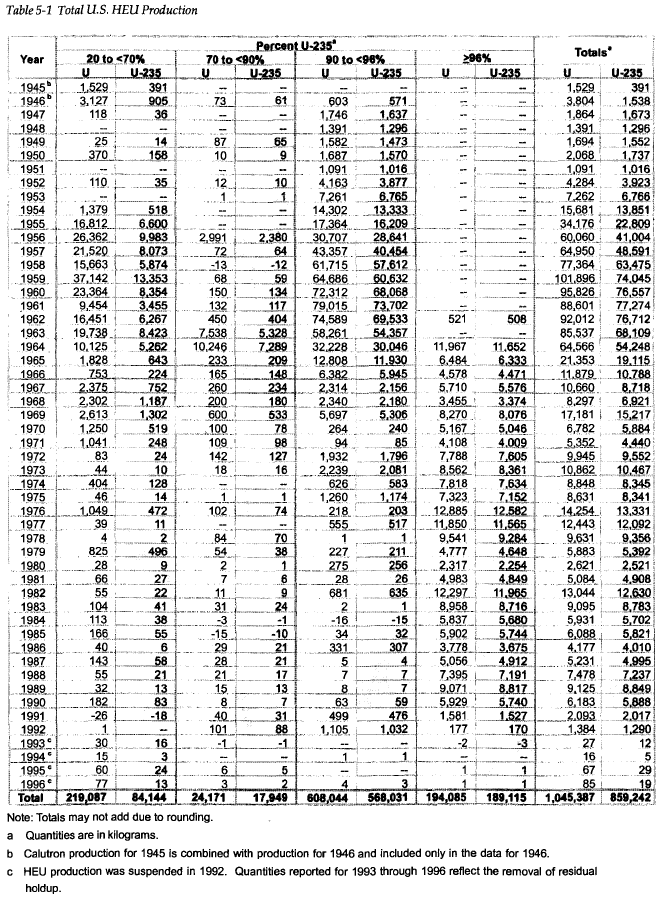I have this factoid on postwar power usage at Y-12
Electric power is supplied by TVA. Within Y-12, power is transmitted to the major distribution systems by three 161-kilovolts (kV) overhead radial feeder lines. There are eleven 13.8-kV distribution systems that range in size from 20 megavolt amperes (MVA) to 50 MVA, and reduce the 161 kV to 13.8 kV and distribute that power to unit substations located at facilities throughout Y-12. Each distribution system consists of a high-voltage outdoor transformer with indoor switchgear, 15-kV feeder cables, power distribution transformers, and auxiliary substation equipment. In total, the 13.8-kV distribution systems include approximately 30 miles of overhead lines, 10 miles of underground cable, and 740 pole- and pad-mounted transformers. At Y-12, the average monthly power usage is less than approximately 30 to 40 megawatts (MWe). The available capacity, approximately 430 MWe, greatly exceeds current demands. This is due to the fact that the original uses of Y-12 required a large, robust electrical system to support the uranium enrichment mission. The change in mission, from uranium enrichment to weapons manufacturing and subsequent evolution to the current missions, has greatly reduced Y-12’s electrical needs
But don't discount what gaseous diffusion like K-25 used.
The plants were the original(K-25), K-27, K-29, K-31 and K-33 which contained the largest equipment housed in the third largest steel structure in the world at that time falling behind the Eiffel Tower and the Empire State building. K-33 went on stream in mid 1954 and it’s dimensions were awesome. The single building was 81 ft. high, covered more than 32 acres, had two floors and a partial basement. It’s part of the cascade consisted of the main feed facility which fed the low grade uranium, 640 separation stages each one made up of a converter the size of a small house which contained 4000 individual barrier tubes(tube bundle), an axial compressor and a 2000HP GE or Westinghouse electric motor.
...
The supply voltage to each of the 640 stages was 4480AC and during normal cascade operation would float around 600-800 amps. On down surges which were infrequent I’ve seen all the stages in a cell pinned at 1000 amps. When the single plant was completed and on stream it used more electric power than the city of Chicago. When all the gaseous diffusion plants were completed and on stream, Oak Ridge, Portsmouth, Paducah etc. combined they consumed 10% of all the generated power in the United States.
